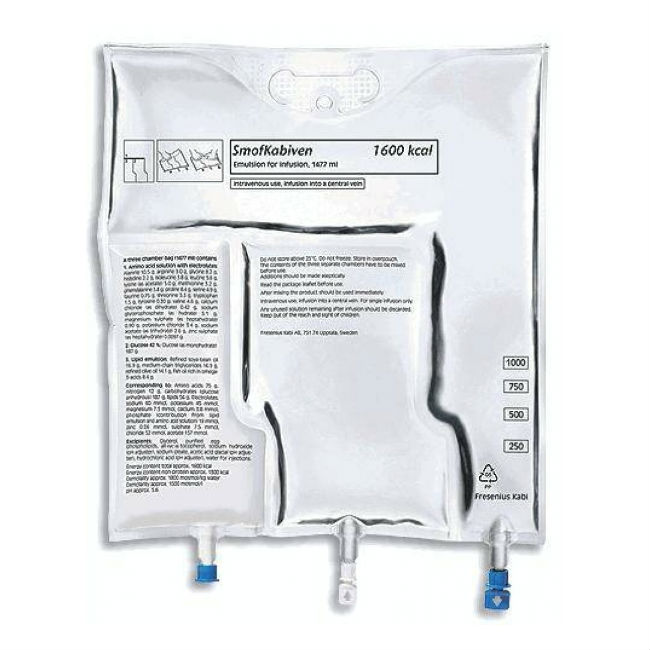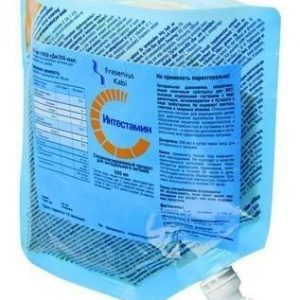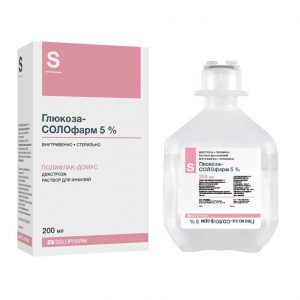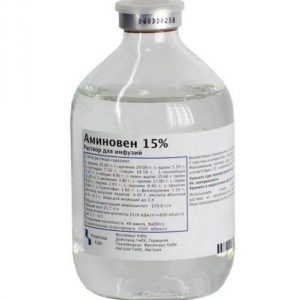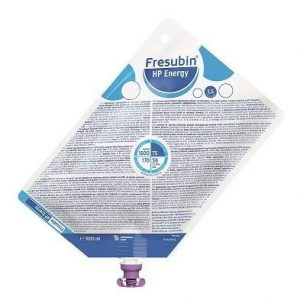Description
Latin name
SMOFKabiven central
Release form
CMOf a central amino acid solution.
Packing
4 bags of 1477 ml.
¤ °Ñ ¼ ° º ¾ » ¾ ³ ¸Ñ Ñ º ¾ ´ ¹ÑÑ ² ¸
¾ ¼ ± ¸ ½ ¸Ñ ¾ ² ° ½ ½ ¹ ¿Ñ ¿ °Ñ °Ñ ´ »Ñ ¿ °Ñ ½Ñ Ñ ° »Ñ ½ ¾ ³ ¾ ¿ ¸Ñ ° ½ ¸Ñ. ¤ °Ñ ¼ ° º ¾ » ¾ ³ ¸Ñ Ñ º ¸ Ñ ² ¾ ¹ÑÑ ² ° ¿Ñ ¿ °Ñ °Ñ ° ¾ ¿Ñ ´ »ÑÑÑ ÑÑ ³ ¾ Ñ ¾ÑÑ ° ² ¾ ¼.
¸Ñ ¾ ² °Ñ Ñ ¼Ñ »ÑÑ ¸Ñ
¸Ñ ¾ ² °Ñ Ñ ¼Ñ »ÑÑ ¸Ñ ¡ ¤ ° ± ¸ ² ½ ® Ñ ½Ñ Ñ ° »Ñ ½ ¹ ² º »ÑÑ ° Ñ ¡ ¤ » ¸ ¿ ¸ ´ ( ¡ ¤ – SMOF – ° ± ±Ñ ² ¸ °Ñ ÑÑ °, ² º »ÑÑ °ÑÑ °Ñ ¿ Ñ ² ±Ñ º ² ¸ÑÑ ¾Ñ ½ ¸ º ¾ ² ¼ °Ñ », ²Ñ ¾ ´ÑÑ ¸Ñ ² Ñ ¾ÑÑ ° ² ¿Ñ ¿ °Ñ °Ñ °: Soya oil – ¡ ¾ ² ¾ ¼ °Ñ » ¾, Medium chain triglycerides ¡ ¢ – ÑÑ ´ ½ Ñ ¿ ¾Ñ Ñ ½ Ñ Ñ ¸ ³ » ¸Ñ Ñ ¸ ´ , Olive oil – » ¸ ² º ¾ ² ¾ ¼ °Ñ » ¾, Fish oil – Ñ ± ¸ ¹ ¶ ¸Ñ ), º ¾Ñ ¾Ñ ¹ ¿ ¾ Ñ ° · ¼ Ñ ° ¼ Ñ °ÑÑ ¸Ñ ¸ ± ¸ ¾ » ¾ ³ ¸Ñ Ñ º ¸ ¼ Ñ ² ¾ ¹ÑÑ ² ° ¼ ¸ ´ ½Ñ ¸Ñ ½ Ñ ½ ´ ¾ ³ ½ ½ ¼ Ñ ¸ » ¾ ¼ ¸ ºÑ ¾ ½ ° ¼. ¾ ¼ ¿ ¾ ½ ½Ñ ¶ ¸Ñ ¾ ² ¾ ¹ Ñ ¼Ñ »ÑÑ ¸ ¸ ¡ ¤ ° ± ¸ ² ½ ® Ñ ½Ñ Ñ ° »Ñ ½ ¹ – Ñ ¾ ² ¾ ¼ °Ñ » ¾, ÑÑ ´ ½ Ñ ¿ ¾Ñ ½ Ñ Ñ ¸ ³ » ¸Ñ Ñ ¸ ´ , ¾ » ¸ ² º ¾ ² ¾ ¼ °Ñ » ¾ ¸ Ñ ± ¸ ¹ ¶ ¸Ñ – ºÑ ¾ ¼ Ñ ° · » ¸Ñ ¸ ¹ ² Ñ ¾ÑÑ ° ² ¸ Ñ ½ Ñ ³ Ñ ¸Ñ Ñ º ¾ ¹ ¿ » ¾Ñ ½ ¾ÑÑ ¸, ¾ ± » ° ´ °ÑÑ Ñ ² ¾ ¸ ¼ ¸ Ñ ¾ ±ÑÑ ² ½ ½ ¼ ¸ Ñ °Ñ ¼ ° º ¾ ´ ¸ ½ ° ¼ ¸Ñ Ñ º ¸ ¼ ¸ Ñ ² ¾ ¹ÑÑ ² ° ¼ ¸.
Ñ ¾ ² ¾ ¼ ¼ °Ñ » Ñ ¾ ´ Ñ ¶ ¸Ñ ÑÑ ± ¾ »ÑÑ ¾ º ¾ » ¸Ñ ÑÑ ² ¾ ½ · ° ¼ ½ ¸ ¼ Ñ ¶ ¸Ñ ½ Ñ º ¸Ñ » ¾Ñ . ½ ¾ ± ¾ » ²Ñ ³ ¾ ± ¾ ³ °Ñ ¾ » ¸ ½ ¾ » ² ¾ ¹ º ¸Ñ » ¾Ñ ¾ ¹ ( ¿Ñ ¸ ± » ¸ · ¸Ñ »Ñ ½ ¾ 55-60%), º ¾Ñ ¾Ñ °Ñ Ñ ² »Ñ Ñ ÑÑ -6 ¶ ¸Ñ ½ ¾ ¹ º ¸Ñ » ¾Ñ ¾ ¹. 8% Ñ ¾ÑÑ ° ² ° Ñ ¾ ² ¾ ³ ¾ ¼ °Ñ » ° ¿Ñ ´ÑÑ ° ² » ½ ¾ – » ¸ ½ ¾ » ½ ¾ ² ¾ ¹ º ¸Ñ » ¾Ñ ¾ ¹, Ñ ² »ÑÑÑ ¹ÑÑ -3 ¶ ¸Ñ ½ ¾ ¹ º ¸Ñ » ¾Ñ ¾ ¹. ¸Ñ ¾ ² °Ñ Ñ ¼Ñ »ÑÑ ¸Ñ, ²Ñ ¾ ´ÑÑ °Ñ ² Ñ ¾ÑÑ ° ², ¿Ñ ¿ °Ñ °Ñ ° ¡ ¤ ° ± ¸ ² ½ ® Ñ ½Ñ Ñ ° »Ñ ½ ¹, ¾ ± Ñ ¿ Ñ ¸ ² ° Ñ ½ ¾ ±Ñ ¾ ´ ¸ ¼ ¾ º ¾ » ¸Ñ ÑÑ ² ¾ ½ · ° ¼ ½ ¸ ¼ Ñ , ¶ ¸Ñ ½ Ñ º ¸Ñ » ¾Ñ .
¾ÑÑ ´ÑÑ ² ¾ ¼ ÑÑ ´ ½ Ñ ¿ ¾Ñ ½ Ñ ¶ ¸Ñ ½ Ñ º ¸Ñ » ¾Ñ ¾Ñ ³ ° ½ ¸ · ¼ ¾ ± Ñ ¿ Ñ ¸ ² ° Ñ ÑÑ ± ÑÑ Ñ ¾ ´ ¾ÑÑ Ñ ¿ ½ ¾ ¹ Ñ ½ Ñ ³ ¸ ¹, ± » ° ³ ¾ ´ °Ñ Ñ ¸Ñ Ñ ¿ ¾Ñ ¾ ± ½ ¾ÑÑ ¸ ± ÑÑ Ñ ¾ ¾ º ¸Ñ »ÑÑ ÑÑÑ.
» ¸ ² º ¾ ² ¾ ¼ °Ñ » ¾ ¿ ¾ÑÑ ° ² »Ñ Ñ Ñ ½ Ñ ³ ¸Ñ ² Ñ ¾Ñ ¼ ¼ ¾ ½ ¾ ½ ½ °Ñ Ñ ½ ½ Ñ ¶ ¸Ñ ½ Ñ º ¸Ñ » ¾Ñ , º ¾Ñ ¾Ñ ½ ° ¼ ½ ¾ ³ ¾ ¼ ½ÑÑ ¿ ¾ ´ ² Ñ ¶ ½ ¾ º ¸Ñ » ½ ¸Ñ ¿ ¾ ÑÑ ° ² ½ ½ ¸Ñ Ñ Ñ ¾ ¾Ñ ² Ñ ÑÑ ²ÑÑÑ ¸ ¼ º ¾ » ¸Ñ ÑÑ ² ¾ ¼ ¿ ¾ » ¸ ½ ½ °Ñ Ñ ½ ½ Ñ ¶ ¸Ñ ½ Ñ º ¸Ñ » ¾Ñ .
± ¸ ¹ ¶ ¸Ñ Ñ °Ñ ° ºÑ Ñ ¸ ·Ñ Ñ ÑÑ ² Ñ ¾ º ¸ ¼ Ñ ¾ ´ Ñ ¶ ° ½ ¸ ¼ Ñ ¹ º ¾ · ° ¿ ½Ñ ° ½ ¾ ² ¾ ¹ ( ) ¸ ´ ¾ º ¾ · ° ³ ºÑ ° ½ ¾ ² ¾ ¹ (DHA) º ¸Ñ » ¾Ñ . DHA Ñ ² »Ñ Ñ ÑÑ ² ° ¶ ½ ¼ ÑÑ Ñ Ñ ºÑ ÑÑ ½ ¼ º ¾ ¼ ¿ ¾ ½ ½Ñ ¾ ¼ º » Ñ ¾Ñ ½ Ñ ¼ ¼ ±Ñ ° ½, ° Ñ ² »Ñ Ñ ÑÑ ¿Ñ ´Ñ ÑÑ ² ½ ½ ¸ º ¾ ¼ Ñ ¹ º ¾ · ° ½ ¾ ¸ ´ ¾ ², Ñ ° º ¸Ñ º ° º ¿Ñ ¾ÑÑ ° ³ » ° ½ ´ ¸ ½ , Ñ Ñ ¾ ¼ ± ¾ ºÑ ° ½ ¸ » ¹ º ¾Ñ Ñ ¸ ½ .
¼ ¸ ½ ¾ º ¸Ñ » ¾Ñ ¸ Ñ » ºÑ Ñ ¾ » ¸Ñ
¼ ¸ ½ ¾ º ¸Ñ » ¾Ñ ²Ñ ¾ ´ÑÑ ² Ñ ¾ÑÑ ° ² ± » º ¾ ² ¾ ± Ñ ½ ¾ ¹ ¿ ¸Ñ ¸ ¸ ¸Ñ ¿ ¾ »Ñ ·ÑÑÑ ÑÑ ¾Ñ ³ ° ½ ¸ · ¼ ¾ ¼ ´ »Ñ Ñ ¸ ½Ñ · ° ± » º ¾ ² ² Ñ º ° ½ÑÑ , ° ¸Ñ ¸ · » ¸Ñ º ¿ ¾ ´ ² Ñ ³ ° Ñ ÑÑ ¼ Ñ ° ± ¾ » ¸ · ¼Ñ ¿ ¾ Ñ Ñ ´Ñ ± ¸ ¾Ñ ¸ ¼ ¸Ñ Ñ º ¸Ñ ¿ÑÑ ¹. ÑÑ » ´ ¾ ² ° ½ ¸Ñ Ñ ² ¸ ´ Ñ »ÑÑÑ ²ÑÑÑ ¾ Ñ Ñ ¼ ¾ ³ ½ ½ ¾ ¼ ÑÑÑ ºÑ ²/ ² ² ² ´ ½ ¸Ñ ° ¼ ¸ ½ ¾ º ¸Ñ » ¾Ñ .
ºÑÑ Ñ ¾ · °
»Ñ º ¾ · ° ( ´ ºÑÑ Ñ ¾ · °) Ñ ² »Ñ Ñ ÑÑ ½ · ° ¼ ½ ¸ ¼ ¼ ¸ÑÑ ¾Ñ ½ ¸ º ¾ ¼ ± ÑÑ Ñ ¾ ² Ñ ² ¾ ± ¾ ¶ ´ °ÑÑ ¹ÑÑ Ñ ½ Ñ ³ ¸ ¸, ½ ¾ ±Ñ ¾ ´ ¸ ¼ ¾ ¹, ² Ñ .Ñ., ¸ ´ »Ñ ¼ Ñ ° ± ¾ » ¸ · ¼ ° ° ¼ ¸ ½ ¾ º ¸Ñ » ¾Ñ .
¤ °Ñ ¼ ° º ¾ º ¸ ½ Ñ ¸ º °
¸Ñ ¾ ² °Ñ Ñ ¼Ñ »ÑÑ ¸Ñ
° · » ¸Ñ ½ Ñ Ñ ¸ ³ » ¸Ñ Ñ ¸ ´ ² Ñ ¾ÑÑ ° ² ¡ ¤ » ¸ ¿ ¸ ´ ¸ ¼ ÑÑ Ñ ° · ½ ¿ ¾ º ° · °Ñ » ¸ º » ¸Ñ ½Ñ °, ½ ¾ ¡ ¤ » ¸ ¿ ¸ ´ ² ÑÑ ´ ½ ¼ ( º ° º Ñ ¼ ÑÑ) Ñ » ¸ ¼ ¸ ½ ¸Ñ Ñ Ñ ÑÑ ± ÑÑ Ñ , Ñ ¼ ´ » ¸ ½ ½ ¾Ñ ¿ ¾Ñ ½ Ñ Ñ ¸ ³ » ¸Ñ Ñ ¸ ´ (LCT). ¡ ° ¼ ¹ ½ ¸ · º ¸ ¹ ¿ ¾ º ° · °Ñ »Ñ º » ¸Ñ ½Ñ ° ¸ · ²Ñ Ñ º ¾ ¼ ¿ ¾ ½ ½Ñ ¾ ² ¡ ¤ » ¸ ¿ ¸ ´ Ñ ¾ » ¸ ² º ¾ ² ¾ ³ ¾ ¼ °Ñ » ° ( ½ Ñ º ¾ »Ñ º ¾ ½ ¸ ¶ , Ñ ¼ Ñ LCT), ° ½ ° ¸ ± ¾ » ² Ñ ¾ º ¸ ¹ º » ¸Ñ ½Ñ – Ñ ÑÑ ´ ½ Ñ ¿ ¾Ñ ½ Ñ Ñ Ñ ¸ ³ » ¸Ñ Ñ ¸ ´ ¾ ² (MCT). ± ¸ ¹ ¶ ¸Ñ ² Ñ ¼ Ñ ¸ LCT ¾ ± » ° ´ ° Ñ Ñ ° º ¸ ¼ ¶ º » ¸Ñ ½Ñ ¾ ¼, º ° º Ñ ¸ÑÑ LCT.
¼ ¸ ½ ¾ º ¸Ñ » ¾Ñ ¸ Ñ » ºÑ Ñ ¾ » ¸Ñ
¤ °Ñ ¼ ° º ¾ º ¸ ½ Ñ ¸Ñ Ñ º ¸ Ñ °Ñ ° ºÑ Ñ ¸ÑÑ ¸ º ¸ ° ¼ ¸ ½ ¾ º ¸Ñ » ¾Ñ ¸ Ñ » ºÑ Ñ ¾ » ¸Ñ ¾ ², ² ² ¾ ´ ¸ ¼ Ñ ²/ ², Ñ ° º ¸ ¶ , º ° º ¿Ñ ¸ ¸Ñ ¿ ¾ÑÑ Ñ ¿ » ½ ¸ ¸ Ñ ¿ ¸Ñ ¹. ´ ½ ° º ¾ ° ¼ ¸ ½ ¾ º ¸Ñ » ¾Ñ ± » º ¾ ² ¿ ¸Ñ ¸ Ñ ½ °Ñ ° » ° ¿ ¾ ¿ ° ´ °ÑÑ ² ¿ ¾Ñ Ñ ° »Ñ ½ÑÑ ² ½Ñ ¿ Ñ ½ ¸, ¸ » ¸ÑÑ · °Ñ ¼ ² Ñ ¸ÑÑ ¼ ½ ¹ ºÑ ¾ ² ¾Ñ ¾ º, ² Ñ ¾ ²Ñ ¼Ñ º ° º ° ¼ ¸ ½ ¾ º ¸Ñ » ¾Ñ , ² ² ¾ ´ ¸ ¼ ² ² ½Ñ, ¿ ¾ ¿ ° ´ °ÑÑ ½ ¿ ¾ÑÑ ´ÑÑ ² ½ ½ ¾ ² Ñ ¸ÑÑ ¼ ½ ¹ ºÑ ¾ ² ¾Ñ ¾ º.
ºÑÑ Ñ ¾ · °
¤ °Ñ ¼ ° º ¾ º ¸ ½ Ñ ¸Ñ Ñ º ¸ Ñ °Ñ ° ºÑ Ñ ¸ÑÑ ¸ º ¸ ³ »Ñ º ¾ · ( ´ ºÑÑ Ñ ¾ · ), ² ² ¾ ´ ¸ ¼ ¾ ¹ ¿ÑÑ ¼ ¸ ½ÑÑ · ¸ ¸, Ñ ° º ¸ ¶ , º ° º ¿Ñ ¸ ¿ ¾ÑÑ Ñ ¿ » ½ ¸ ¸ Ñ ¾ ± Ñ ½ ¾ ¹ ¿ ¸Ñ ¹.
Indications
Parenteral nutrition for adults and children from 2 years of age, when oral or enteral nutrition is impossible, insufficient or contraindicated.
Contraindications
severe hyperlipidemia
severe hepatic insufficiency
severe coagulation disorders
congenital metabolic disorders
severe renal failure without access to hemodialysis or hemofiltration srdlp sharp composition of the
electrolyte preparation general contraindications to infusion therapy: acute pulmonary edema, hyp rgidratatsiya, decompensated cardiac insufficiency and hypotonic dehydration
gemafagotsitarny syndrome / macrophage activation syndrome
unstable state (e.g., post-traumatic condition, uncompensated diabetes, acute myocardial infarction, decompensated metabolic acidosis, septic shock and hyperosmolar coma)
hypersensitivity to egg or soy proteins, fish oil or to any auxiliary component of the drug.
Use in cases of impaired liver function
Contraindicated in severe renal failure in the absence of access to hemodialysis or hemofiltration.
Use in cases of impaired renal function
Contraindicated in severe liver failure.
Use in children
Contraindicated in children under 2 years of age.
Use during pregnancy and lactation
Special safety studies of the drug SMOFKabiven ® central during pregnancy and lactation have not been conducted. Before the appointment of SMOFKabiven ®, the central pregnant and lactating women doctor must evaluate the expected benefits of therapy for the mother and the potential risk to the fetus or infant.
Dosage and administration
The drug is administered intravenously, only in the central veins.
SMOFKabiven ® central is available in four sizes of bags, designed for patients with normal, moderately increased or reduced nutrient requirements. Complete parenteral nutrition may require the addition of vitamins, electrolytes, and trace elements.
The dose should be selected individually, and when choosing the volume of the bag should take into account the patient’s condition, body weight and need for nutrients. In obese patients, the dose should be set based on ideal body weight. The dose and rate of infusion of the drug should be determined depending on the patient s ability to metabolize fat, nitrogen and glucose, as well as the need for nutrients and energy.
The need for nitrogen to maintain the protein composition of the body depends on the patient’s condition (i.e., his nutritional status and degree of catabolic stress).
Adults
For patients with normal nutritional status or in a state of mild catabolic stress, the need for nitrogen is 0.10-0.15 g / kg / day (0.6-0.9 g / kg / day of amino acids). Patients with moderate to severe catabolic stress with or without nutritional status impairment require 0.15-0.25 g / kg / day of nitrogen (0.9-1.6 g / kg / day of amino acids). In some situations (for example, in patients with burns or in a state of severe catabolism), the need for nitrogen may be even higher.
Dose 13-31 ml / kg / day of the drug SMOFKabiven ® central corresponds to 0.10-0.25 g / kg / day of nitrogen (0.6-1.6 g / kg / day of amino acids) and 14-35 kcal / k / day of energy (12 – 27 kcal / kg / day of non-protein energy). This dose range covers the needs of most patients.
Infusion Rate
The maximum infusion rate for dextrose is 0.25 g / kg / h, for amino acids 0.1 g / kg / h, and for lipids 0.15 g / kg / h. The maximum rate of administration of SMOFKabiven ® central should not exceed 2.0 ml / kg / h (this corresponds to the maximum rate of infusion of dextrose, amino acids and lipids). The recommended duration of infusion is 12-24 hours.
Maximum daily dose
The maximum daily dose varies depending on the clinical condition of the patient and may change over time. The recommended maximum daily dose is 35 ml / kg / day and provides the patient with nitrogen in an amount of 0.28 g / kg / day (corresponding to 1.8 g / kg / day of amino acids), dextrose in an amount of 4.5 g / kg / day, fat in an amount of 1.33 g / kg / day and energy in the amount of 39 kcal / kg / day (which corresponds to 31 kcal / kg / day of non-protein energy).
Children
SMOFKabiven ® central can be used in children 2 years of age and older. The dose is determined by the nature of the metabolism of individual nutrients in the patient’s body.
In children aged 2 to 10 years, infusion should be started with low doses (14-28 ml / kg / day, the dose should be increased by 10-15 ml / kg / day, the maximum dose is 40 ml / kg / day). The upper limit of protein load in children is 4 g / kg.
In children over 10 years of age, the drug can be used in the same doses as in adults. The duration of use of the drug SMOFKabiven ® central is usually from 5 to 7 days, however, depending on the condition of the patient, it can be extended to 3-4 weeks.
Recommendations for preparing the Biofin container for use with
1. Removing the external
package Lay the container on a horizontal surface. Tear the outer bag at the notch by pulling along the edge.
Remove the outer bag, discard with the oxygen scavenger.
2. Mixing
Place the three-chamber bag on a horizontal surface. Roll the bag diagonally from the side of the holder in the direction of the blind port.
Then, holding the rolled part with one hand and maintaining a constant pressure inside the bag, apply force (press) with the other hand to the bag until the vertical partitions open.
Vertical partitions open due to the generated pressure of the package contents. You do not need to open the horizontal partition – the contents of the cameras mix easily after opening only the vertical partitions.
Mix the contents of the cameras by turning the bag 2-3 times. (Note: partitions can be opened in an external package, after which you can remove the external package).
3. Connection of the
infusion system If you need to introduce additives (with known compatibility, for example, special preparations of vitamins, minerals, Dipeptiven), remove (break off) the cap with an arrow from the white port immediately before the introduction of additives.
While holding the base of the inlet, completely insert the needle through the center of the membrane and inject the additive (with known compatibility). Stir the contents thoroughly by turning the bag several times before introducing another supplement.
Connecting the infusion system: immediately before inserting the needle, remove the cap from the blue port.
Holding the bag with the outlet facing up, insert the needle through the membrane, turning and pushing it if necessary. Use an infusion system without air access or shut off air access on a system with air access.
(Note: the inside of the ports is sterile).
4. Suspension on an infusion stand
Hang the bag on the stand (using the hole on the holder).
Side effects
Side effects when administered correctly are extremely rare.
From the cardiovascular system: tachycardia, increase or decrease in blood pressure.
From the respiratory system: shortness of breath.
From the digestive system: impaired appetite, nausea, vomiting, increased activity of liver enzymes in plasma.
From the nervous system: headache, dizziness.
Allergic reactions: anaphylactic and anaphylactoid reactions, skin rash, urticaria, fever, chills.
Local reactions: local temperature increase, hyperemia.
If these side effects appear, the infusion of SMOFKabiven ® Central should be discontinued, then, if necessary, infusion can be continued at a lower rate.
To prevent the risk of an infusion rate that is too high, a volumetric infusion pump is recommended.
Drug Interaction
Some medications, such as insulin, can interact with the body’s lipase system. However, this type of interaction is of limited clinical importance.
Heparin at therapeutic doses causes a temporary release of lipoprotein lipase into the bloodstream. This may lead to increased plasma lipolysis followed by a decrease in triglyceride clearance.
Soybean oil contains Vitamin K1. However, its content in SMOFKabiven Central is so small that its effect on blood clotting in patients receiving indirect anticoagulants is negligible.
Compatibility
SMOFKabiven ® Central can be mixed only with those drugs and nutrients for which compatibility with it is confirmed (vitamins, trace elements, glutamine preparations for parenteral administration, electrolyte solutions), for example:
1. Vitalipid
2. Soluvit H
3. Adamel H
4. Dipeptive.
Any addition to the drug should be made under aseptic conditions. The solution is for single use only. Remnants of the solution should be destroyed after completion of the infusion.
overdose
Fat overload syndrome
Impaired ability to metabolize triglycerides can lead to the development of fat overload syndrome, which can be caused by lipid overdose. Attention should be paid to possible signs of metabolic overload. Causes of impaired lipid metabolism can be genetic (individual changes in metabolism), in addition, fatty metabolism can be affected by present or previous diseases. High hypertriglyceridemia and fat overload syndrome can develop even at the recommended rate of drug administration, if the clinical condition of the patient changes suddenly (for example, kidney function or
infectious complications develop). Fat overload syndrome is characterized by hyperlipidemia, fever, fatty infiltration of the liver, hepatomegaly with or without jaundice, splenomegaly, anemia, leukopenia, thrombocytopenia, disorders of coagulation, hemolysis, and laboratory function. The symptoms are usually reversible and stopped when the fat emulsion is stopped.
Introduction of large amounts of amino acids
As with other amino acid solutions, when the recommended infusion rate of SMOFKabiven ® Central is exceeded, the amino acids contained therein can lead to undesirable effects. Possible development of nausea, vomiting, chills and sweating. Amino acid infusion can also cause fever. With impaired renal function, concentrations of nitrogen-containing metabolites such as creatinine and urea may increase.
Excess dextrose administration
If the rate of dextrose infusion exceeds its clearance threshold, the patient will develop hyperglycemia.
When developing symptoms of overloading with fat or amino acids, the infusion of SMOFKabiven ® Central should be stopped or reduced. There is no specific antidote for overdose of these drugs. Urgent measures for the overdose of lipids and amino acids are reduced to measures of life support with particular attention to the respiratory and cardiovascular systems. In addition, careful biochemical monitoring and therapy of specific metabolic disorders should be performed.
In the event of hyperglycemia, it is necessary to carry out therapy in accordance with the clinical situation by prescribing short-acting insulin and / or correcting the infusion rate of SMOFKabiven ® Central.
Overdose can also lead to fluid overload, electrolyte imbalance and hyperosmolar state. In rare cases, if these symptoms are severe, consider hemodialysis, hemofiltration, or hemodiafiltration.
Storage conditions
The drug should be stored out of the reach of children at a temperature not exceeding 25 ° C. Do not freeze. Store in outer bag.
Expiration
2 years.
Expiration after mixing
After opening the latch, the chemical and physical stability of the mixed contents of the three chambers is maintained for 36 hours at 25 ° C. For microbiological safety, the mixture should be used immediately after mixing the contents of the chambers.
If it is impossible to use SMOFKabiven ® Central immediately after mixing the chambers, the Expiration of the preparation should not exceed 24 h at 2 ° to 8 ° C.
Expiration after mixing with additives
After opening the retainers and mixing the three solutions, it is possible to add compatible additives through the inlet. To ensure microbiological safety, the mixture should be used immediately after the administration of the additives.
If it is impossible to use SMOFKabiven ® Central immediately after mixing with additives, the Expiration of the drug should not exceed 24 hours at a temperature of 2 ° to 8 ° C.
Active ingredient
Amino acids for parenteral nutrition
terms of sale from
pharmacies Prescription
Formulation
Dosage form
infusion solution
Fresenius Cabi, Germany
